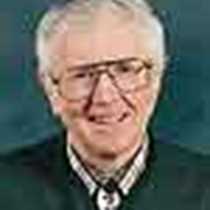Fort Astor, Oregon
At sunrise the “Graveyard of the Pacific” was gentle as a lamb when Sea Lion crossed the Columbia River Bar after an overnight run south from Grays Harbor, Washington.
The short red and long white signature flash of Cape Disappointment Lighthouse guided our approach. Fort Stevens and Fort Canby first guarded this strategic Columbia entrance with smoothbore Rodman cannon in the Civil War.
Though far removed from the Civil War the forts were placed here because Confederate raiders sailed into the Pacific. One raider reached north to the Bering Sea where it trapped and destroyed an American whaling fleet.
In 1942, a Japanese submarine surfaced just outside the bar and lobbed seven shells, all harmless hits, onto Fort Stevens. This event marked the only time the mainland United States was shelled in WWII.
We were bound for Fort Clatsop, which our Corps of Discovery erected post haste and occupied between Nov. 26, 1805, and March 23, 1806, before turning homeward. Both captains Lewis and Clark fully expected trading vessels when they arrived here. They were instructed by President Jefferson to return the journals and collections by ship, or, buy their passage back if conditions required. That late in the season the trading ships were gone. Most over-wintered in Hawaii.
Although the men were thoroughly sick of eating elk, it was the Roosevelt race of coast elk that nourished, clothed and shod them and provided tallow for their candles. They tanned the elk hides to renew their clothing, made dozens of pairs of moccasins and made candle molds to use throughout the Fort Clatsop winter.
Captain Lewis wrote somewhat in jest on Feb. 7, 1806, “This evening we had what I call an excellent supper, marrowbone and boiled brisket of elk with a little fat on it. This for Fort Clatsop is living in style.”
After busing to the summit of Coxcomb Hill and climbing the 164 steps of the Astor Column for a grand 360-degree overview of the entire Columbia estuary, some of us hiked back to the ship and touched history at the site of Fort Astor. John Jacob Astor organized his Pacific Fur Company to corner the trade on the North Pacific Coast with a major base on the Columbia River entrance. One party came by ship and the other crossed the continent, arriving and erecting Fort Astor in 1811.
Along with Captain Robert Gray’s discovery of the Columbia River in 1792, the Corps of Discovery at Fort Clatsop (and Astor’s undertaking), the U.S. matched its claims to the Old Oregon Country against those of Great Britain.
At sunrise the “Graveyard of the Pacific” was gentle as a lamb when Sea Lion crossed the Columbia River Bar after an overnight run south from Grays Harbor, Washington.
The short red and long white signature flash of Cape Disappointment Lighthouse guided our approach. Fort Stevens and Fort Canby first guarded this strategic Columbia entrance with smoothbore Rodman cannon in the Civil War.
Though far removed from the Civil War the forts were placed here because Confederate raiders sailed into the Pacific. One raider reached north to the Bering Sea where it trapped and destroyed an American whaling fleet.
In 1942, a Japanese submarine surfaced just outside the bar and lobbed seven shells, all harmless hits, onto Fort Stevens. This event marked the only time the mainland United States was shelled in WWII.
We were bound for Fort Clatsop, which our Corps of Discovery erected post haste and occupied between Nov. 26, 1805, and March 23, 1806, before turning homeward. Both captains Lewis and Clark fully expected trading vessels when they arrived here. They were instructed by President Jefferson to return the journals and collections by ship, or, buy their passage back if conditions required. That late in the season the trading ships were gone. Most over-wintered in Hawaii.
Although the men were thoroughly sick of eating elk, it was the Roosevelt race of coast elk that nourished, clothed and shod them and provided tallow for their candles. They tanned the elk hides to renew their clothing, made dozens of pairs of moccasins and made candle molds to use throughout the Fort Clatsop winter.
Captain Lewis wrote somewhat in jest on Feb. 7, 1806, “This evening we had what I call an excellent supper, marrowbone and boiled brisket of elk with a little fat on it. This for Fort Clatsop is living in style.”
After busing to the summit of Coxcomb Hill and climbing the 164 steps of the Astor Column for a grand 360-degree overview of the entire Columbia estuary, some of us hiked back to the ship and touched history at the site of Fort Astor. John Jacob Astor organized his Pacific Fur Company to corner the trade on the North Pacific Coast with a major base on the Columbia River entrance. One party came by ship and the other crossed the continent, arriving and erecting Fort Astor in 1811.
Along with Captain Robert Gray’s discovery of the Columbia River in 1792, the Corps of Discovery at Fort Clatsop (and Astor’s undertaking), the U.S. matched its claims to the Old Oregon Country against those of Great Britain.




